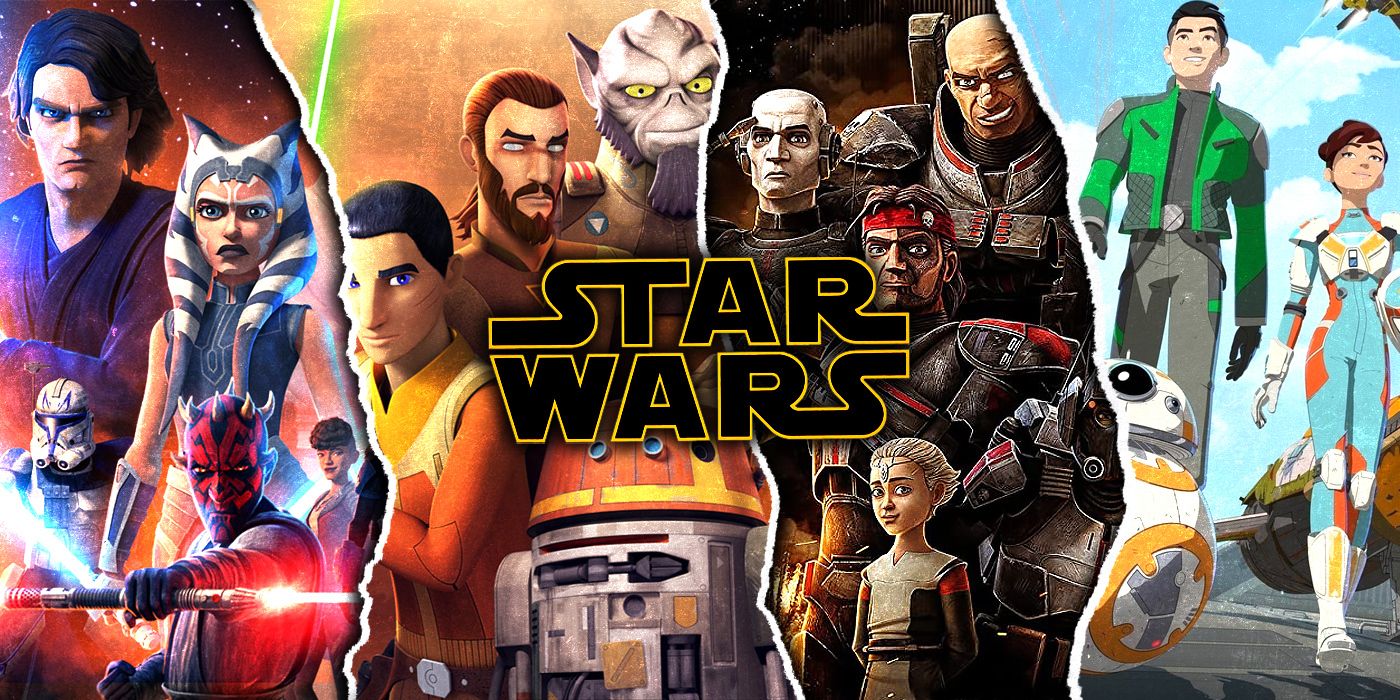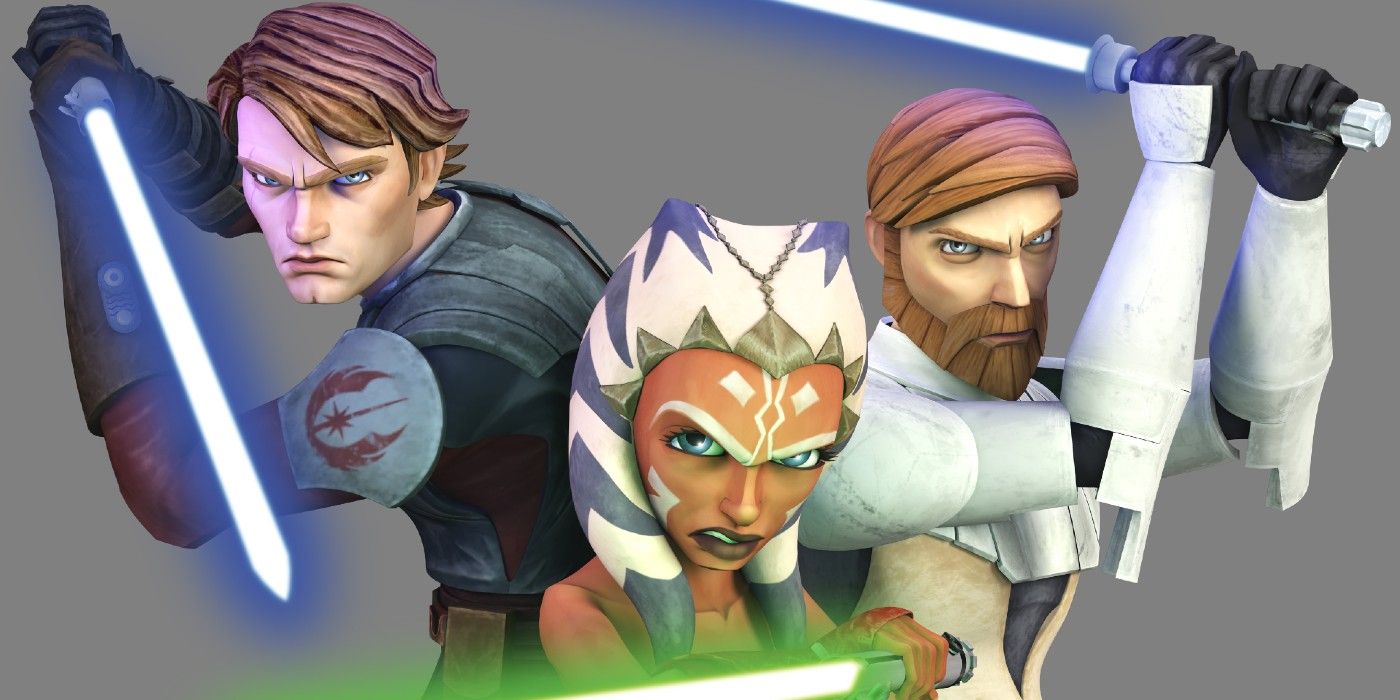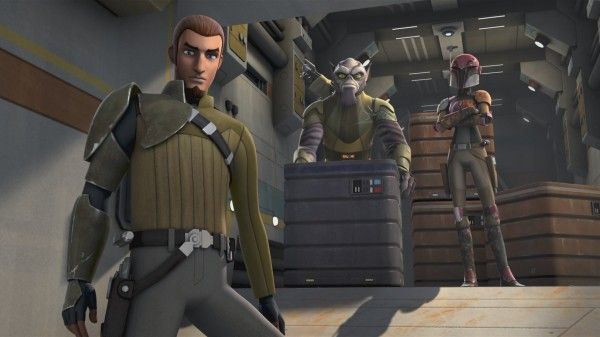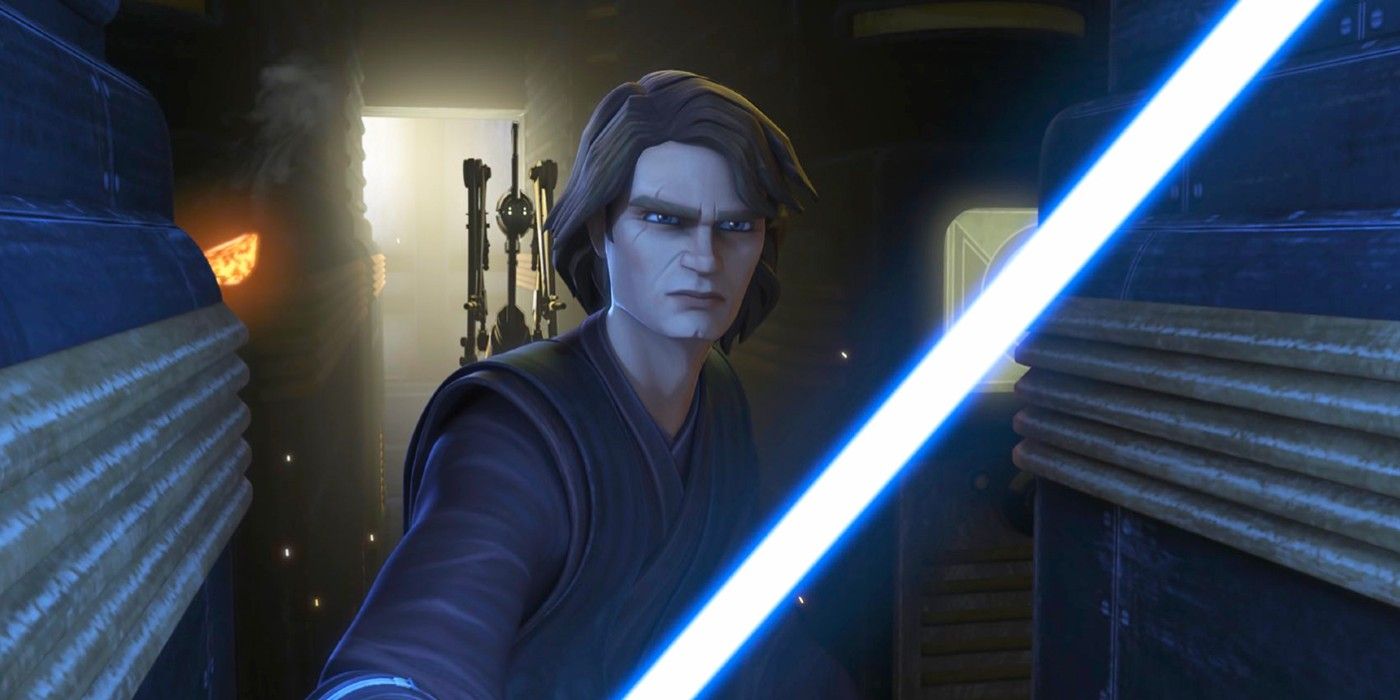May might as well be Star Wars month since May the Fourth has become a universal celebration. And doubly so now that Disney+ is giving fans another chance to revisit the franchise with Star Wars: The Bad Batch premiering last week. In 2019, we bid farewell to the Skywalkers with Star Wars: The Rise of Skywalker, and we’re still months away from the return of the next live-action property in the galaxy far, far away. Which is why this animated show, and its predecessors, are the perfect avenue to enjoy the franchise.
If you love Star Wars, the animated shows need to be on your watchlist. Star Wars: The Clone Wars, Star Wars Rebels, and Star Wars Resistance are all great family entertainment set during three distinct eras of the franchise. Admittedly, as an adult, you may find yourself scoffing at the idea of watching animated programming. Cartoons are for kids, right? Sure, they are! They’re also for kids of all ages, including you, the adultier adult. It doesn’t matter what kind of medium the story is told in; these Star Wars properties all do one job—they expand the universe that we love dearly.
Star Wars isn’t new to the world of animation. Back in the 1980s, Ewoks and Droids brought everyone’s favorite galaxy to 2D. In 2008, the franchise returned to the format with the release of Star Wars: The Clone Wars, an animated film that introduced Anakin Skywalker’s padawan, Ahsoka Tano. The response was underwhelming, but the film was simply a teaser for the series that would eventually air on the Cartoon Network. That the series would then continue for seven seasons and become one of the most popular properties in the franchise wasn’t something even the Emperor could have foreseen. The appeal of Star Wars: The Clone Wars was its ability to introduce new characters, while also extending the roles of the existing main cast. Anakin Skywalker, Obi-Wan Kenobi, Padmé Amidala, and the clones featured in many sprawling new adventures that weren’t possible in live-action. The series also expanded the role of Ahsoka Tano, who has since become one of the favorites in the franchise. She has now made the leap from animation to live-action with Rosario Dawson bringing Ahsoka to life on The Mandalorian. Another enduring appeal of the show lies in the episodes’ pithy opening sayings, most of which could be our daily life mottos.
The success of The Clone Wars gave Disney the impetus to venture further into animated territory. Star Wars Rebels gave fans a look at the galaxy before Luke Skywalker, Leia Organa, and Han Solo came to its rescue. Rebels took place during the Imperial reign and introduced a band of, well, rebels, who traveled the galaxy to aid and rescue innocent worlds from Imperial terror. The show’s main cast featured brand new characters, but, like The Clone Wars before it, the excitement lay in the return of fan-favorites. This time, those favorites came from The Clone Wars. The shared universe of these series provided a look at how the Rebel Alliance worked to overthrow the Empire, one rebellion at a time. Rebels has captured the imaginations of many fans, but it hasn’t reached the levels of popularity that The Clone Wars enjoys. The characters do take a little time to warm to—they are rougher around the edges, given their harsh upbringing. But before long, you’ll be enjoying your stay aboard the Ghost, bombing around the galaxy with her crew.
The creative teams for Clone Wars and Rebels delivered yet another mainstay in the animated canon: Star Wars Resistance. The two-season series was set during the sequel trilogy, and even included some of the films’ cast reprising their roles in animated form — Oscar Isaac, Gwendoline Christie, and Domhnall Gleeson all had a role to play on the show. However, even before Resistance aired its first episode, there was plenty of talk about how the show’s animation style didn’t match up to its predecessors. Well, even a scruffy nerf-herder can end up with a princess, and Resistance deserves all the love. One minute with the show’s protagonist Kazuda Xiono, an aspiring pilot and undeniable "Kaz"tastrophe, will make you forget about all the set dressing. Tasked with being a Resistance spy on a refueling base, Kaz is out of his depth. A formidable pilot, Kaz must pretend to be a mechanic, a job for which he is entirely unsuitable. It’s a recipe for both disaster and laughs. In combination with Team Fireball, Kaz’s antics on this show are designed to put a smile on your face.
There are definitely some cartoon-y moments in all the animated shows, but they’re not afraid to go to the Dark Side. The toll of war, the political machinations at play, and the mistrust among the good guys were key tentpoles of all three series. The Clone Wars has several multi-part arcs that showcase the devastating losses faced by both sides. The Ghost team on Rebels have the toughest go of it, especially Kanan Jarrus, one of the last Jedi remaining when the show begins. Even on Resistance, the threat of the First Order and the restrictions placed on Team Fireball made for stressful viewing. Meanwhile, a constant — and beloved — trope in Star Wars properties is the redemption arc. Rebels has a surprising one during its latter seasons, while Resistance features a much needed one. And with its treatment of eventual supervillain Anakin Skywalker, The Clone Wars may have invented the first successful anti-redemption arc.
There’s a reason these shows are so well-loved, and it’s because they’ve given fans more insight into the franchise that we enjoy. The films, after all, have a limited run time within which the story must be told. With the animated shows, the creators had the time to shape and structure those stories for maximum impact. They also had the space to develop characters who didn’t get as much screen time in the films. (Padmé’s political run, for example, is fleshed out in The Clone Wars.) But the beauty of the series is how much more we learn about the clones and the people that they are. Star Wars: The Bad Batch is only possible because of the work that The Clone Wars put in to humanize the clones and highlight their seemingly contradictory individuality. What the Star Wars animated shows bring to the franchise is a sense of balance. Young Padawans can take their first steps into this world through these shows, and existing fans can learn more about the Old and New Republics while spending a little extra time with their favorite characters.
Star Wars: The Bad Batch streams every Friday on Disney+.




